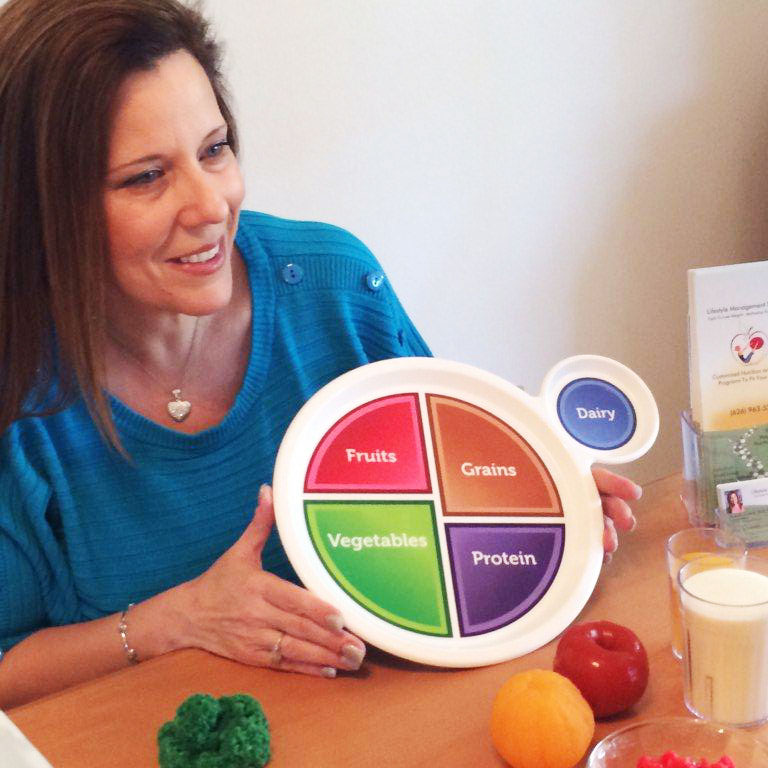
Helping Clients to Take Small Steps
Gina M. Crome, MS, MPH, RD, is an ACE-certified personal trainer and the owner of Lifestyle Management Solutions, a nutritional counseling and consulting practice that specializes in weight management and disease prevention. Having once weighed more than 300 pounds, Gina has unique insight into the mindsets of those impacted by obesity. Now 172 pounds lighter, she holds dual master’s degrees in clinical psychology and public health nutrition from Loma Linda University, where she received the Selma Andrews Award for Excellence and Professionalism. In the past 20 years, her career as a health and fitness professional has resulted in several awards and appearances in national media, including Good Morning America and Shape magazine.
ACE: How do you personally see the obesity epidemic affecting our society— from the healthcare system to relationships within families?
Gina Crome: The obesity epidemic is raising a lot of red flags for the current healthcare system. Individuals and their healthcare providers are dealing with a ripple effect that impacts obese patients outside of the primary medical setting through difficulties like mobility issues, financial problems and social stigma. The biggest issue is what’s down the road, as the obese children of today grow up more at risk for various diseases, such as type 2 diabetes.
The American Diabetes Association (www.diabetes.org) has identified diabetes as one of our nation’s fastest- growing issues and points out that 1 in 3 Americans will have the disease by 2050. As we know, diabetes if left unchecked can lead to its own set of consequences, such as kidney failure, nontraumatic
lower limb amputations and blindness. Unfortunately, the healthcare system in the future will be busy treating and financing the comorbidities of obesity, and the American household will likely feel the same stress in providing physical, emotional and financial support for those family members who are affected.
ACE: Of all the habits and environmental factors that lead people to obesity, which do you feel is the most challenging for them to overcome, and why?
Gina Crome: One of the major challenges for our society is having readily available food coupled with the fact that, as we develop as a nation, we make it much easier to be inactive. This is in conflict with the plethora of information on how to lose weight quickly and effectively. Reputable media and professional sources such as ACE and IDEA regularly publish materials that address the importance of living a “healthy lifestyle” in order to lose weight in a safe and consistent manner. That message seems to get lost among the magical pill or potion products that promise to help you lose all the weight you want in the next 24 hours. Those who seek the quick and seemingly easy answer to weight loss often find themselves gaining the pounds back (and then some) in the end, mostly because they had their eyes so focused on the prize and consequently failed to learn healthier habits along the way.
ACE: Why do you believe it’s important for parents, teachers and even competitive athletes to make healthy lifestyles a priority in their own lives?
Gina Crome: These individuals are like the pace car for an auto race. They set the tempo for current and future generations. Parents, teachers and competitive athletes need to look beyond their personal challenges to focus on what’s right for setting the pace going forward. The best investment we can make in our future begins with the actions of our leaders today. These social examples set the stage for teaching children how to adapt and take control of their lives for a healthy and successful tomorrow.
ACE: What misconceptions—if any— do you believe health and fitness professionals have about people who may be struggling with their weight or adopting
healthy habits? Why is it important for them to overcome those misconceptions before they can truly help people?
Gina Crome: Everyone has preconceived notions and beliefs that are based on individual experiences and biases. This information is used to build initial responses and judgments for all people we meet—including clients. A negative reaction to a client should be the first red flag that you as a health and fitness professional may need to do a bit of introspection. It’s important to determine (1) what your feelings are and (2) how those feelings are affecting your ability to work with that individual. This will enable you to move forward and develop personally and professionally. Stereotypical feelings that we attribute to an individual are often derailed once we get to know the person. This underscores the importance of asking questions and truly listening to a client’s responses, so you understand his or her goals, priorities, and personal barriers to living a healthier life.
ACE: What advice would you give to people who may not know where to start when it comes to living a healthy lifestyle?
Gina Crome: Gina Crome: In the words of Lao Tzu, “A journey of a thousand miles begins with a single step.” Healthy lifestyles aren’t built by completely overhauling all habits at once. Instead, they are coaxed and developed over time by adopting small changes that can proverbially be stacked on top of each other. People may want to begin by taking a look at their priorities and defining a few realistic short-term as well as longer-term goals. Next they’ll want to make sure they steer clear of extremes. Overly strict diets or workout routines typically lead to boredom and frustration, and they are often impossible to maintain. The best diet or workout schedule is one we can do for life. Lastly, I think it’s important that a healthy lifestyle can’t be measured by a number on a scale. Doing so undermines all the important components that make up well-being, such as healthier eating habits, finding exercise that we enjoy, and learning to accept and even embrace individual challenges.